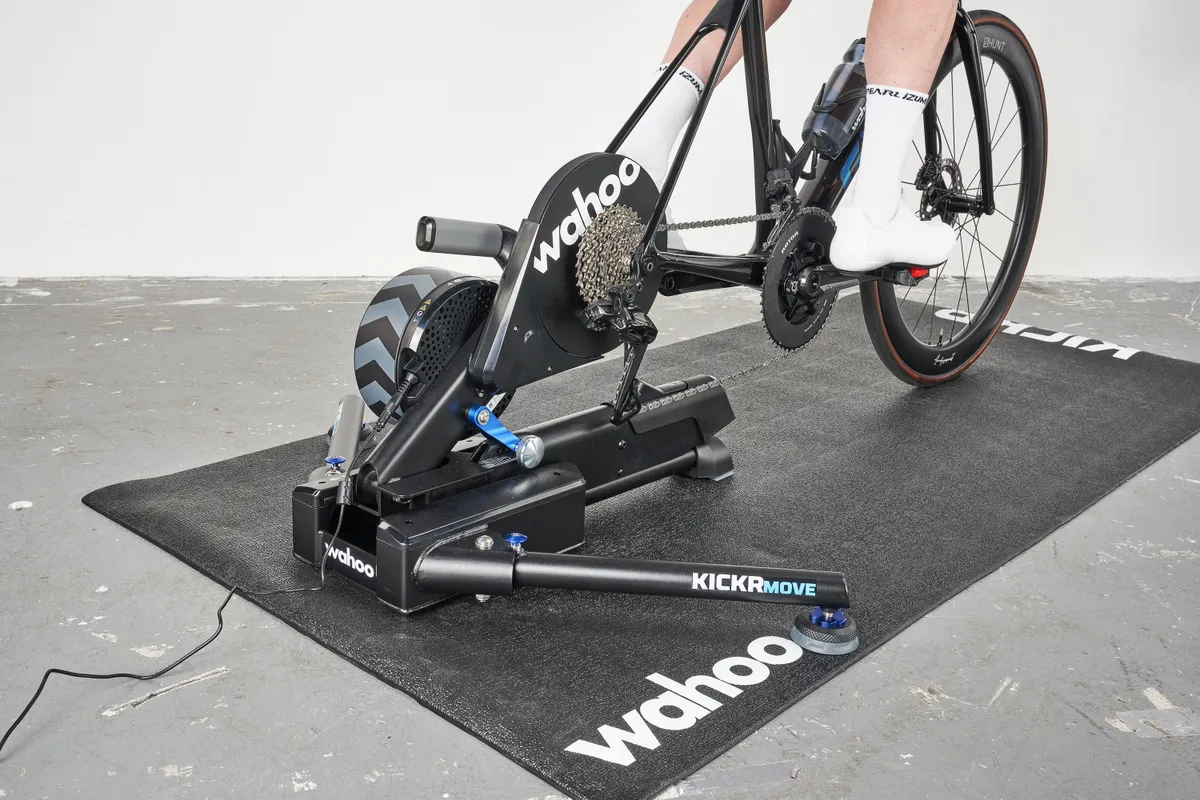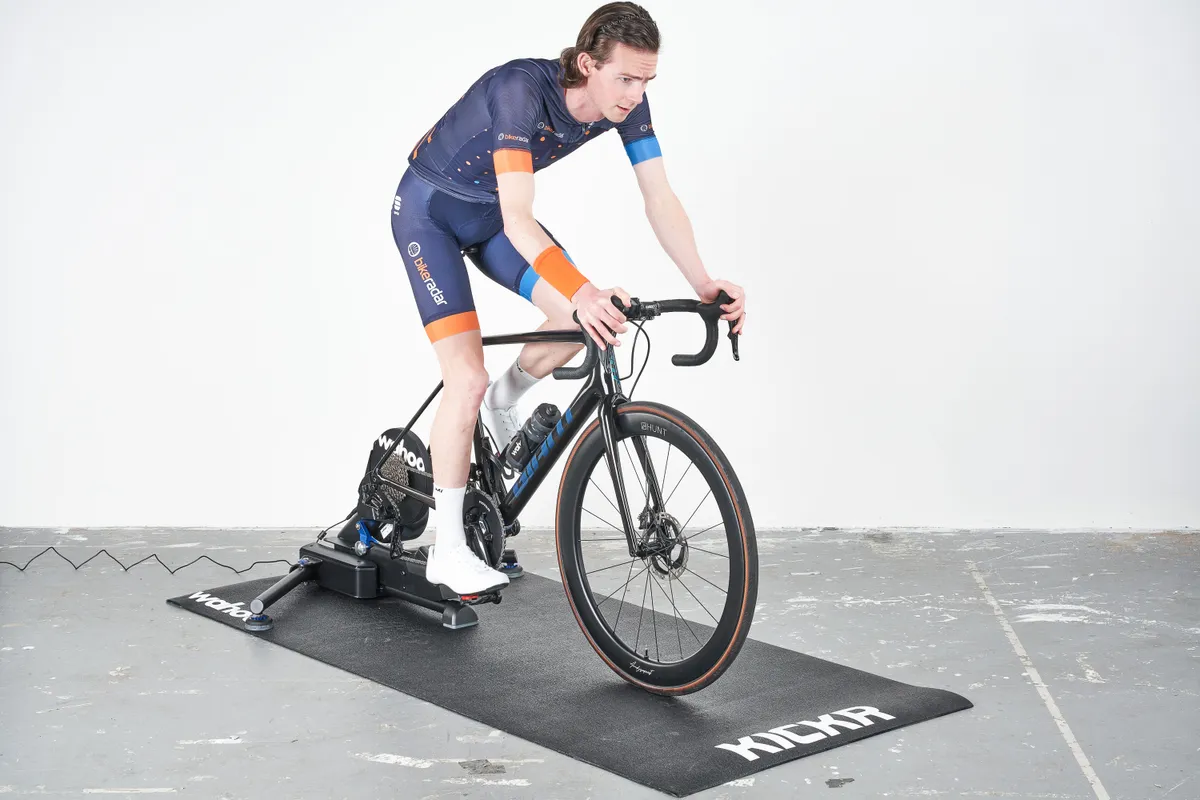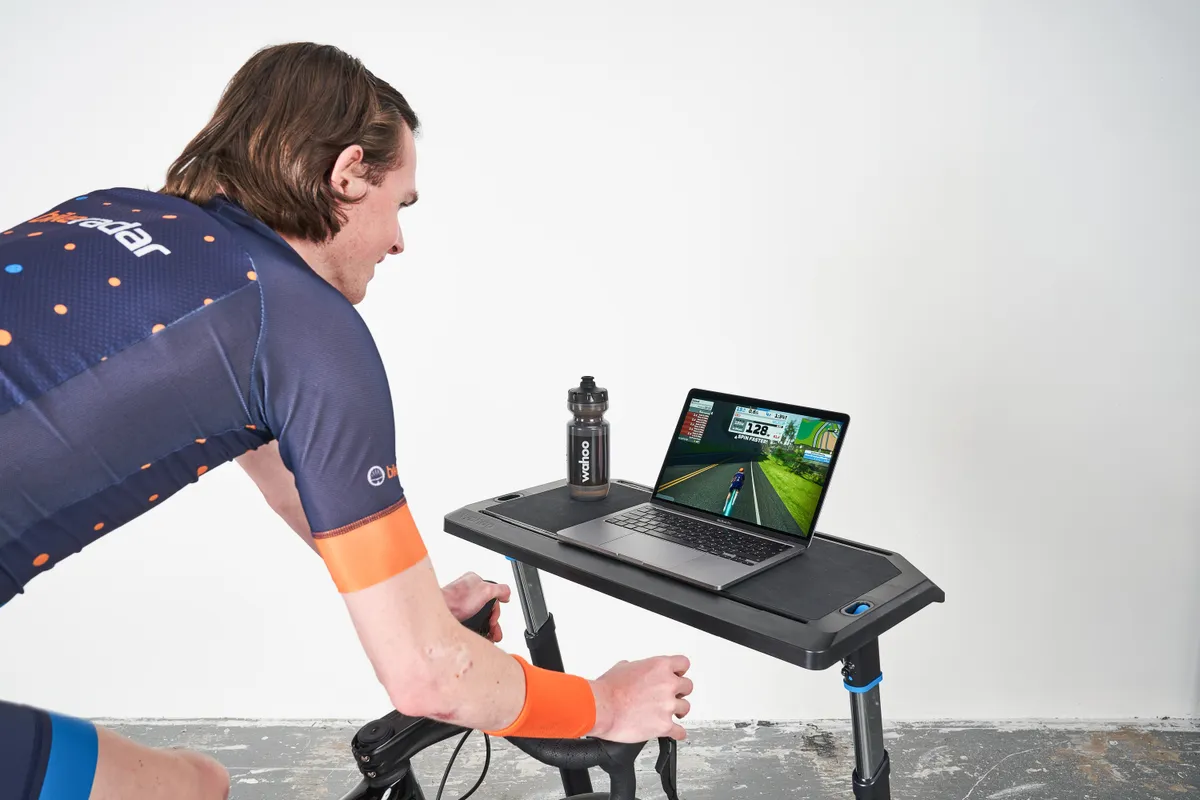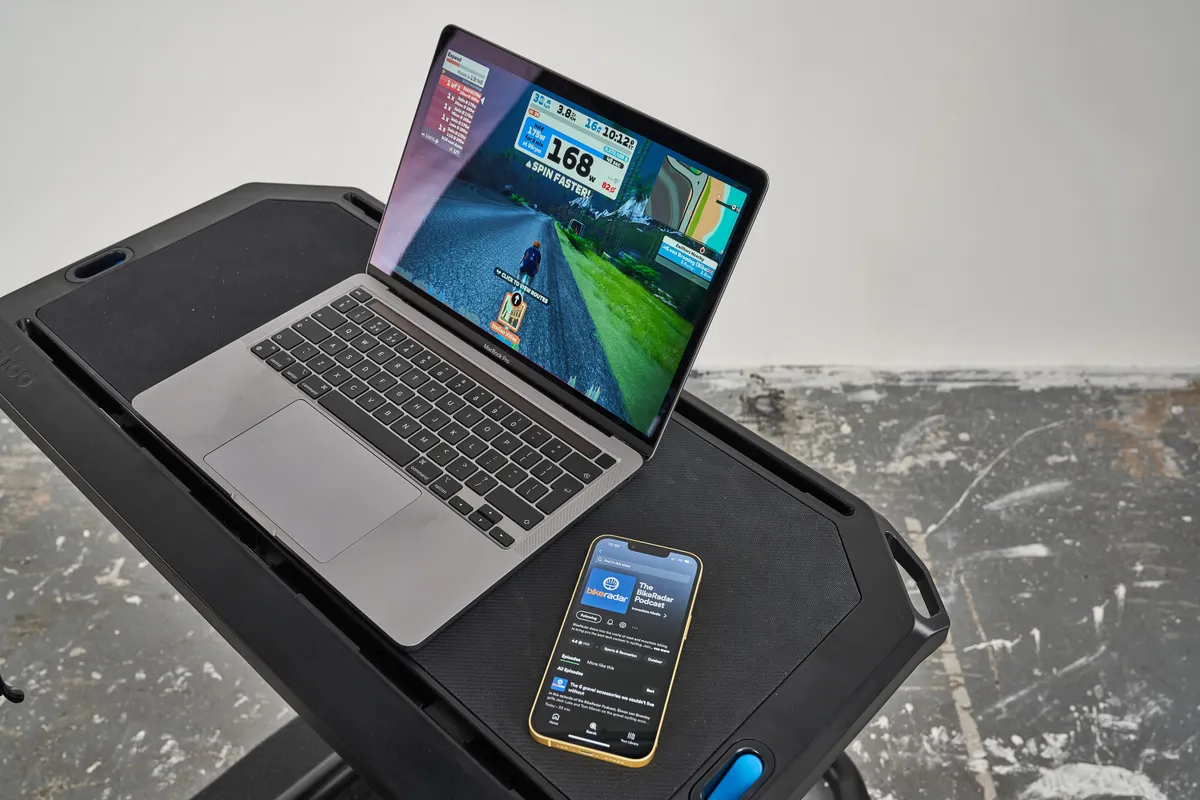When it comes to smart trainers, 'smart' refers to the ability of a computer program or app to communicate with the trainer and control the resistance without the need for a rider to shift gears.
This is called ERG mode – one of the most notable features of smart trainers, helping to distinguish them from the turbo trainers of old.
Let’s take a look at exactly what ERG mode is, why and when you might want to use it, as well as the key advantages and disadvantages it can offer.
What is ERG mode?

ERG mode is a setting in training platforms such as Zwift, TrainerRoad and Wahoo SYSTM that fixes your power output by automatically adjusting your resistance to match your cadence.
Power is a calculation of torque (how hard you’re pressing on the pedals) multiplied by cadence (how fast they are turning). ERG mode uses the two in tandem to ensure you hit the prescribed power output.
As an example, if a Zwift workout requires you to hold 200 watts, the resistance will automatically increase if your cadence drops, or decrease if your cadence increases, in order to keep you at 200 watts.

This is in contrast with other trainer modes, or when you're out on the bike in the 'real world', where the onus is on you to adjust your torque and cadence in order to hit the target power.
Perhaps not surprisingly, ERG mode only works with pre-built workouts, or via rider inputs on an app, because it requires a target power to be defined; otherwise, the trainer wouldn’t know how much resistance to apply.
However, the latest indoor cycling apps offer a wide range of workouts and training plans, and also enable you to build your own, so there's no shortage of options.
What are the benefits of ERG mode?

One of the big advantages of ERG mode is that you don’t need to think (much) about your workout, which can be helpful if you’re riding at the end of a tiring day. Just start the workout and pedal.
The only thing you really need to focus on is keeping your cadence in a comfortable range, and not varying this too much.
ERG mode is particularly appealing for interval workouts, and for good reason.
First, using ERG mode is helpful for people who struggle to pace their efforts and regulate their power. There’s often a temptation to go harder than planned over the first few intervals, which might mean you can’t complete the last few. ERG mode prevents this by fixing the power in the correct range.

Second, ERG mode can help you hang on over the last few seconds of an interval, where you may ordinarily have given up. Think of it like an automated training companion, keeping you pushing right up to the last second.
By fixing your power to hit a pre-determined output, both during an interval and recovery, ERG mode also enables you to target specific training adaptations, whether you’re working on your VO2 max or improving your sprinting.
You can use ERG mode in conjunction with your training zones to set the precise output for a particular workout (training apps will do this for you), helping you get the most out of a short training session – one of the key benefits of indoor cycling.
While people tend to use ERG mode mostly for interval training, another important benefit it offers is keeping riders ‘reined in’ during lower-intensity rides, including base training and recovery rides, where there can be a tendency to go harder than is necessary.
What are the drawbacks of ERG mode?

One major drawback of ERG mode is your workouts are likely based on a fixed percentage of FTP (Functional Threshold Power).
However, FTP changes from day to day, depending on factors such as fatigue, sleep, nutrition, hydration and so on.
This means on some days your power targets in your workout might be a little too high, and on others they might be a little too low. Some apps, including Zwift, enable you to adjust the difficulty of an interval session during the workout.
Riding too often in ERG mode can also limit the development of skills that are important in the real world.
These include the ability to gauge your effort level and determine appropriate pacing, controlling your power output through appropriate gear selection and cadence, and having the mental fortitude to push hard entirely of your own volition.
It’s great to be able to ride a workout in the pain cave without too much thinking involved. However, sometimes the focus needed in continually adjusting your own resistance and cadence to meet your power targets can add interest to a session. It's also an important pacing skill to master for when you're not on a smart trainer.
So, switching off ERG mode every now and again, if you use it often, might be a good call if you’ve got a long indoor session to get through.
Spiral of death

Another downside of ERG mode is that intervals can sometimes feel harder, particularly if you start to fatigue and your cadence drops outside a comfortable range.
At the extreme of this, you can get stuck in a spiral, where cadence drops with fatigue, leading to increased resistance and force demands on your legs. This is sometimes called the ‘spiral of death’, and can result in you grinding to a complete halt.
It pays to be aware of these limitations when getting started with ERG mode so that you can use it to its full potential and get the best experience from using it in your training platform of choice.
When to use ERG mode

While ERG mode is suitable for most types of workouts, it can be helpful to perform at least some of your interval sessions without ERG mode on.
This will help you both assess whether your interval power targets are appropriate or might be holding you back too much, and develop some of those real-world skills mentioned above, notably gear selection and pacing.
From a practical perspective, ERG mode can be slow to adjust to changes in your target power, which can be problematic if you’re doing short sprinting intervals, and in this case riding without ERG may be best.
If your workout includes a variety of intervals – including sprints – then some apps may enable you to turn ERG mode off and on during the workout itself.
Top ERG mode tips
Finally, here are a few pointers to help you get the best from your rides and workouts using ERG mode. We also have some general indoor training tips and a beginner's guide to indoor cycling.
- Try to keep your cadence relatively steady, and if making cadence changes (eg, moving from seated to standing), keep these gradual and controlled. This allows the resistance to adjust in line with cadence changes and will create less power variation
- When approaching the start of an interval, gradually increase your cadence up to a comfortably high level. This gives room for cadence to drop as you fatigue without entering the ‘spiral of death’
- Use the +/- function on your training platform to adjust your power target by 5 to 10% to accommodate how you feel on a given day

